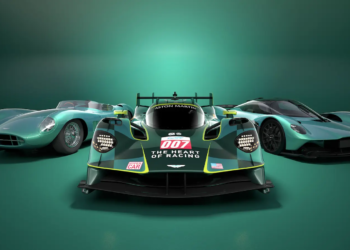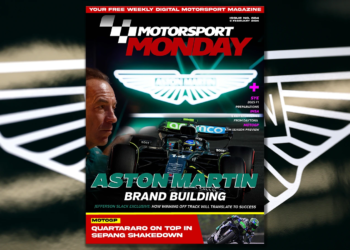Dr. Donald Panoz has died at 83. The pioneering pharmaceutical maven and racing innovator had taken ill in recent weeks, and those close to Dr. Panoz say he spent his final days surrounded by loved ones before passing on Tuesday morning.
Of Italian descent, the Ohioan made his fortune through the invention of the transdermal patch, and through his son Donny’s automotive interests, the Panoz automobile company was formed in the late 1980s and would serve as an eventual bridge to motor racing.

Through an alliance with Adrian Reynard’s UK-based design and manufacturing empire, Panoz made waves in the 1990s with the front-engine Esperante GTR-1 which took on more traditional rear-engine sports prototypes. Panoz and Zytek Engineering also broke new ground by outfitting a GTR-1 with a battery-based hybrid drive system which, nearly 15 years later would become standard among top-tier Le Mans Prototypes.
In North America and Europe, the Panoz Racing team made its mark in a variety of elite championships, winning numerous races with the evocative front-engine prototypes and later, on its own and as a supplier, with its production-based Esperante GT cars.
Panoz stepped in at a critical juncture to purchase IMSA, which had been bought and sold numerous times in the 1990s, and under his care, the American Le Mans Series was launched in its place. Along with purchasing a number of important historic racing circuits like Road Atlanta and Sebring, Panoz infused sports car racing with a fan-first approach and brought stability where it was sorely lacking.
With almost every major auto manufacturer having participated in the ALMS at some point, Panoz is credited for using his vision and resources to give sports car fans, teams, and drivers one of the most prosperous and beloved golden eras in motor racing.

Panoz was also committed to gender equality in racing, and through the Women’s Global GT Series he created to run alongside the upstart ALMS championship, a springboard was established for women to forge driving careers in sports car racing.
In the early 2000s, Panoz also stepped in to purchase the flagging G Force Indy car constructor, and through the investments made in developing the underperforming chassis, he took great pride in watching the rechristened Panoz G Force model capture consecutive wins at the Indy 500 from 2003-2004 with Team Penske and Rahal Letterman Racing.
Through his Elan Technologies firm in Georgia, Panoz’s reach in the sport grew from open-wheel and sports car manufacturing to engine building and composites work which, at its peak, was among the busiest and most diverse companies of its kind in the U.S.
Among the various projects Panoz undertook in recent years, his involvement with the open-top DeltaWing grew from taking on a project created by others to assuming full control of the program and building a new closed-top version that displayed impressive speed and potential.
In 2012, Panoz decided it was time to part with the ALMS and the numerous tracks he’d amassed. From the deal to sell those properties to NASCAR, Panoz seemed to find greater joy in focusing on his favourite side of the sport: conjuring and pursuing new ideas.

With the DeltaWing Racing program in full swing, Panoz was drawn back to the early exploits of “Sparky,” the hybrid Esperante GTR-1, and recently formed a new business, Green4U Technologies, with a goal of building and racing an all-electric prototype at the 24 Hours of Le Mans. Although it did not reach fruition, the project demonstrated that Panoz’s desire to be different and break new ground remained undimmed even into his 80s.
Following the closure of the DeltaWing project, Panoz returned to his roots with an earth-rattling front-engine GT car, the Avezzano GT4, which terrorized the Pirelli World Challenge series upon its debut in 2017. The PWC’s 2018 GTS Sprint and Sprint-X manufacturers’ championships with the Avezzano GT4 bestowed more meaningful titles on his brand and team.
Few have done more to help motor racing than Dr. Panoz whose legacy, seen in the rising tides within IMSA, his commitment to forging new conventions with web-based radio and video streaming, and with unforgettable cars that captured some of the greatest prizes in the world, will be felt for decades to come.
This article first appeared in Racer.com and has been reproduced by the kind permission of Racer.






